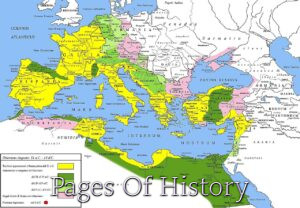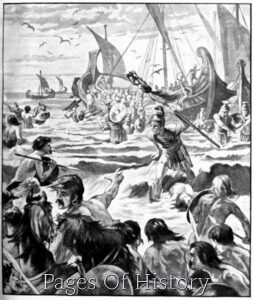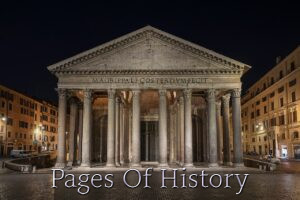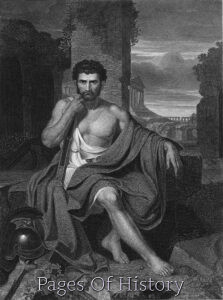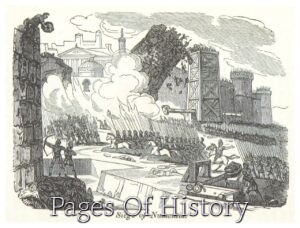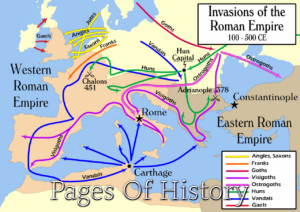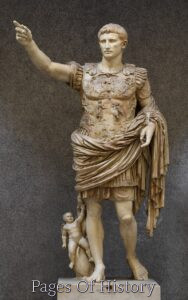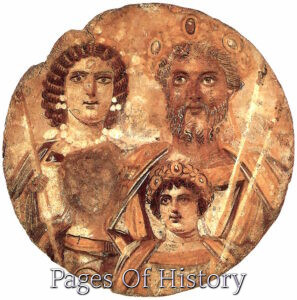Ancient Rome: Overview of the Eternal City’s History and Legacy
Ancient Rome, spanning from the 8th century BCE to the 5th century CE, was a civilization that laid the foundation for much of the modern Western world. Its extensive history encompassed the rise and fall of kings, the establishment of a republic, and the eventual formation of a mighty empire. Throughout its existence, Rome was renowned for its military prowess, innovations in engineering and architecture, and the richness of its cultural and religious traditions. This article delves into the captivating narrative of Ancient Rome and examines its enduring impact on contemporary society.
Founding of Rome
The Myth of Romulus and Remus
According to Roman mythology, the city of Rome was founded on April 21, 753 BCE by the twin brothers Romulus and Remus. The brothers, sons of the god Mars and the Vestal Virgin Rhea Silvia were abandoned as infants and raised by a she-wolf. They eventually decided to establish a city, but a disagreement over its location led Romulus to kill Remus. Romulus then became the first king of Rome, giving the city its name.
Historical Origins
Historians believe that Rome's actual founding was the result of several villages gradually coalescing on Palatine Hill, one of the Seven Hills of Rome. Archaeological evidence suggests that people inhabited the region as early as the 10th century BCE, with the first permanent settlements emerging around the 8th century BCE. These early Romans were a blend of Latins, Etruscans, and Sabines, and their mingling of cultures would come to shape Rome's unique identity.
Roman Republic
Formation of the Republic
The Roman Republic was established in 509 BCE after the last king, Tarquinius Superbus, was overthrown. The republic was governed by two annually elected consuls and the Senate, an assembly of aristocratic elders. This system was designed to prevent any one individual from amassing too much power.
Patricians and Plebeians
Roman society during the Republic was divided into two main classes: the patricians, who were the elite aristocrats, and the plebeians, who comprised the majority of the population. Although the plebeians held some political power through the popular assemblies, they often struggled for equal rights and representation. The Conflict of the Orders, a series of social and political confrontations between the patricians and plebeians, persisted from the 5th to the 3rd century BCE. The plebeians eventually gained greater influence, resulting in a more balanced political structure.
Roman Expansion
The Republic was marked by an aggressive expansionist policy. Rome conquered the Italian Peninsula and soon dominated the entire Mediterranean region. The Roman military, famed for its discipline and organization, employed the manipular formation, which allowed for flexibility and tactical adaptability on the battlefield. Rome's imperial ambitions eventually led to a series of wars, such as the Punic Wars with Carthage and the Macedonian Wars, which further extended its territories.
Roman Empire
The Transition from Republic to Empire
The Roman Republic experienced a period of internal strife during the 1st century BCE, as social and political tensions rose. Ambitious leaders such as Julius Caesar, Pompey the Great, and Crassus formed the First Triumvirate, a political alliance that sought to control Rome's government. Following Caesar's assassination in 44 BCE and a subsequent civil war, his adopted son Octavian emerged victorious. In 27 BCE, Octavian became Augustus, the first Roman Emperor, marking the end of the Republic and the beginning of the Roman Empire.
Pax Romana
The Pax Romana, or Roman Peace, was a period of relative stability and prosperity that lasted from 27 BCE to 180 CE. During this time, the Roman Empire reached its zenith in terms of territorial expansion, economic prosperity, and cultural achievements. The empire was connected by an extensive network of roads, and its efficient administration enabled the movement of goods, people, and ideas. The Pax Romana saw the construction of iconic monuments such as the Colosseum, the Forum, and the Pantheon, which showcased Rome's architectural prowess and artistic sophistication.
Emperors and Dynasties
The Roman Empire was ruled by a succession of emperors belonging to various dynasties. Some, like Augustus and Trajan, were effective and visionary leaders who expanded the empire and implemented beneficial policies. Others, such as Nero and Caligula, were infamous for their tyranny and erratic behavior. The imperial system often experienced periods of instability, with power struggles and assassinations being common occurrences.
Roman Society and Culture
Language and Literature
Latin, the language of the Romans, was the foundation of many modern Romance languages, such as Italian, French, and Spanish. Roman literature was heavily influenced by Greek works, with many authors adapting and translating Greek texts. Notable Roman authors included Virgil, who wrote the epic poem Aeneid; Ovid, known for his masterpiece Metamorphoses; and Cicero, a prominent statesman and orator whose writings on philosophy and rhetoric remain influential today.
Daily Life and Entertainment
Daily life in Ancient Rome varied greatly depending on one's social status and wealth. The wealthy enjoyed lavish banquets and ornate homes, while the poor often lived in cramped apartments called insulae. Roman society was highly urbanized, with public amenities such as baths, theaters, and markets being common features of city life. Gladiatorial games and chariot races were popular forms of entertainment, drawing large crowds to venues like the Colosseum and Circus Maximus.
Technological and Architectural Marvels
Roman Engineering
The Romans were skilled engineers, developing advanced technologies such as the arch, the dome, and concrete. Their mastery of these innovations enabled them to construct monumental buildings that have withstood the test of time. Roman engineers also designed and built extensive systems of aqueducts, which supplied cities with fresh water, and complex networks of roads, which facilitated travel and communication throughout the empire.
Diagram of Roman Engineering Feats
Roman Religion
Roman Pantheon
The Roman religion was polytheistic, with a pantheon of gods and goddesses who governed various aspects of life. Many of these deities were adopted from Greek mythology, with their names and attributes modified to suit Roman culture. For example, the Greek god Zeus became Jupiter in the Roman pantheon, while Aphrodite became Venus. Roman religion also featured numerous local and household gods, as well as the Imperial Cult, which worshipped the emperor as a divine figure.
Religious Practices and Festivals
Roman religious practices centered around rituals and sacrifices designed to honor the gods and maintain harmony between the divine and human realms. Public ceremonies, often led by priests and other religious officials, were held at temples dedicated to specific deities. Roman festivals, such as Saturnalia and Lupercalia, were important events that allowed the populace to participate in religious celebrations and engage in various forms of entertainment.
Influence of Eastern Religions
As the Roman Empire expanded, it encountered and absorbed the religious beliefs and practices of various conquered peoples. The cults of Eastern deities, such as Mithras and Isis, gained popularity within the empire, and their worship often incorporated elements of Roman religious tradition.
The Fall of Ancient Rome
Economic and Military Challenges
The decline of the Roman Empire was a gradual process, with numerous internal and external factors contributing to its eventual collapse. Economic issues, such as rampant inflation, a devalued currency, and heavy taxation, undermined the stability of the empire. Military threats, including barbarian invasions and internal conflicts, stretched Rome's resources thin and weakened its defenses.
Division of the Empire
In an attempt to address the empire's growing difficulties, Emperor Diocletian divided the Roman Empire into the Eastern and Western Roman Empires in 285 CE. The Western Roman Empire, centered in Rome, continued to struggle with economic and military challenges, while the Eastern Roman Empire, with its capital in Constantinople, fared better and would later become the Byzantine Empire.
The Fall of the Western Roman Empire
The Western Roman Empire officially fell in 476 CE when Odoacer, a Germanic chieftain, deposed the last Roman emperor, Romulus Augustulus. This marked the end of ancient Rome and ushered in the period known as the Middle Ages. The Eastern Roman Empire, however, continued to thrive for nearly a thousand years before it fell to the Ottoman Turks in 1453 CE.
Rome’s Lasting Influence
Legacy in Law and Government
Ancient Rome's influence on modern society is far-reaching and enduring, particularly in the areas of law and government. The Roman legal system, founded on principles such as the presumption of innocence and the right to face one's accuser, has been a major influence on contemporary legal systems around the world. Similarly, Roman concepts of governance, such as the separation of powers and the system of checks and balances, have informed the development of modern democratic institutions.
Impact on Art, Architecture, and Engineering
Roman art, architecture, and engineering continue to inspire and inform contemporary design. The use of the arch, the dome, and concrete in modern architecture can be traced back to Roman innovations. Additionally, the Roman tradition of monumental public buildings, such as stadiums, baths, and theaters, has shaped the development of urban spaces in the present day.
Cultural and Linguistic Legacy
Ancient Rome's contributions to literature, language, and education are still evident today. The works of Roman authors, such as Virgil, Ovid, and Cicero, continue to be studied and appreciated for their literary and historical significance. Latin, the language of the Romans, remains an essential component of the study of linguistics, science, and medicine. Furthermore, the Roman alphabet, derived from the Etruscan and Greek alphabets, has become the basis for the writing systems of many modern languages, including English.
Conclusion
Ancient Rome's history and legacy are extensive and multifaceted, encompassing a rich cultural heritage, innovative engineering feats, and enduring contributions to law, language, and governance. Rome's story is one of great achievement and unparalleled power, but also one of decline and eventual collapse. Nevertheless, Rome's impact on contemporary society is unmistakable and continues to be felt in countless ways. As we reflect on the legacy of Ancient Rome, we are reminded of the enduring power of human creativity, ingenuity, and resilience.
In conclusion, Ancient Rome was a civilization that left an indelible mark on human history. From its founding myth of Romulus and Remus to its eventual decline and fall, Rome's story is a testament to human ambition, creativity, and resilience. The Roman Republic and Empire were characterized by their military might, engineering prowess, and cultural sophistication, and their contributions to modern society are immeasurable.
Rome's legacy in law and government, art and architecture, and language and literature continue to influence and inspire contemporary society. The Roman legal system and concepts of governance have informed the development of modern democratic institutions, while Roman engineering innovations continue to shape the design and construction of modern buildings and infrastructure. Roman art and literature remain celebrated for their beauty, creativity, and historical significance, and Latin, the language of the Romans, remains an essential component of the study of linguistics, science, and medicine.
The story of Ancient Rome is not without its flaws and controversies, and its impact on the world was not always positive. Rome's expansionist policies often led to conflict and subjugation of other peoples, and its social and political systems were marked by inequalities and injustices. Nevertheless, Rome's achievements and contributions to human civilization cannot be denied.
As we look back on the legacy of Ancient Rome, we are reminded of the enduring power of human creativity, ingenuity, and resilience. The story of Rome serves as a reminder of the heights that human civilization can reach, as well as the pitfalls and challenges that we must navigate along the way.
References
- Beard, M. (2016). SPQR: A History of Ancient Rome. Liveright Publishing Corporation.
- Matyszak, P. (2009). Ancient Rome on Five Denarii a Day. Thames & Hudson.
- Ridley, R. T. (1986). The Emperor's Private Paradise: Treasures from the Forbidden City. Alfred A. Knopf.
- Scullard, H. H. (2015). From the Gracchi to Nero: A History of Rome from 133 BC to AD 68. Routledge.
- Ward-Perkins, B. (2006). The Fall of Rome and the End of Civilization. Oxford University Press.



